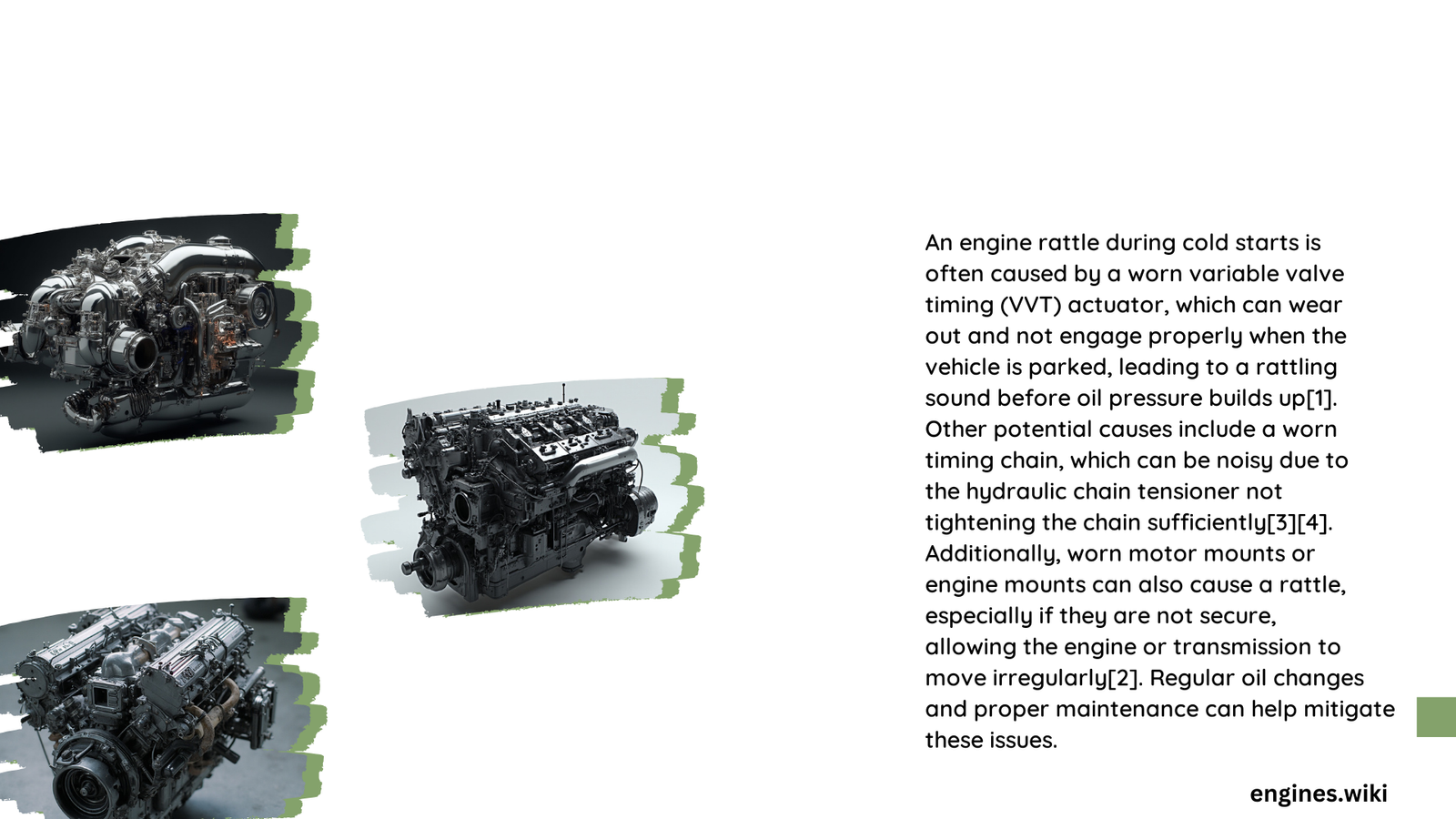Engine rattle when starting can be a concerning sound for vehicle owners, potentially indicating underlying mechanical issues. This mysterious noise often emerges during cold starts, signaling potential problems with timing chains, oil pressure, valve train components, or lifter mechanisms. Understanding the specific causes and diagnostic approaches can help prevent costly engine damage and ensure optimal vehicle performance.
What Causes Engine Rattle During Cold Start?
Why Do Timing Chains Create Startup Noise?
Timing chains are notorious for causing engine rattle, especially when the vehicle has been stationary for extended periods. The primary reasons include:
- Tensioner Wear: Ratchet teeth deterioration prevents proper chain tension
- Cold Temperature Effects: Reduced oil viscosity leads to temporary chain looseness
- Mechanical Stress: Repeated engine cycles cause gradual component degradation
Diagnostic Checklist for Timing Chain Rattle
| Symptom | Potential Cause | Recommended Action |
|---|---|---|
| Metallic Rattling | Loose Timing Chain | Inspect Tensioner |
| Persistent Noise | Worn Chain Guides | Check Chain Alignment |
| Intermittent Sound | Oil Pressure Issues | Verify Oil Viscosity |
How Do Oil Viscosity Problems Contribute to Startup Rattle?
Cold startup engine rattle frequently stems from oil-related challenges:
- Thick Oil Resistance: Higher viscosity oils struggle to circulate quickly
- Insufficient Lubrication: Top-end engine components remain temporarily unprotected
- Temperature-Dependent Performance: Oil behaves differently at various temperatures
What Role Do Valve Train Components Play?
Hydraulic lifters can generate significant startup noise due to:
- Pressure bleed-down during engine rest
- Accumulated mechanical tolerances
- Insufficient initial lubrication
Advanced Diagnostic Strategies

Which Tools Help Identify Engine Rattle Source?
Professional mechanics recommend:
- Mechanic’s stethoscope
- OBD-II diagnostic scanner
- Bright inspection light
- Comprehensive socket set
How to Perform Initial Rattle Assessment?
Step-by-Step Diagnostic Process:
- Listen carefully to noise location and duration
- Check for specific sound characteristics
- Use stethoscope to isolate noise origin
- Scan for relevant diagnostic trouble codes
- Perform visual inspection of timing components
Effective Repair Solutions
What Are Typical Repair Costs?
Repair expenses vary based on specific issues:
- Timing Chain Replacement: $500 – $2,000
- Oil System Maintenance: $50 – $150
- Valve Train Repair: $200 – $1,000
When Should Professional Intervention Occur?
Immediate professional consultation becomes necessary if:
- Rattle persists beyond 5-10 seconds
- Noise increases in volume
- Additional performance symptoms emerge
- Diagnostic codes indicate serious issues
Preventative Maintenance Tips
- Use manufacturer-recommended oil viscosity
- Perform regular oil changes
- Monitor engine performance consistently
- Address minor noises promptly
Pro Tip: Early detection and intervention can prevent expensive engine repairs and potential catastrophic failure.
Conclusion
Understanding engine rattle when starting requires systematic diagnosis, technical knowledge, and proactive maintenance. By recognizing potential causes and implementing appropriate solutions, vehicle owners can ensure long-term engine health and performance.
